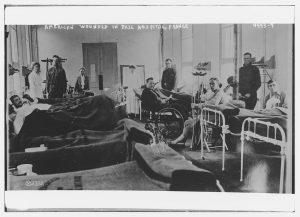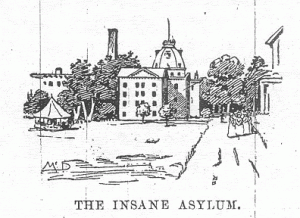The instrumental role Dorothea Dix played in reforming prisons and mental institutions, and the actions of Horace Mann in his campaign for free public education are at the center of this lesson. How did improvements in conditions for people in the public charge, whether prisoners or people institutionalized because of disability, come about? How did the the idea of who gets to be educated chang…

This lesson invites students to wonder about what life was like as a disabled WWI veteran. The lesson provides materials and instructions for guiding students in analysis of primary source materials that include a song about shell shock, a cartoon contrasting wounded veterans with rich profiteers, Red Cross posters, and a photograph highlighting life-changing war injuries.

EMERGING AMERICA HISTORY eNEWS Vol. 5, Issue 12 for March 21, 2018

Incurring a disability at work was a common occurrence of the Industrial Revolution. In this lesson, students will explore how such injuries impacted the lives of workers in an era before many public and private supports that we take for granted today. This lesson integrates disability history into a much larger 14-day unit on the Industrial Revolution. The lesson plan provides a series of act…

EMERGING AMERICA HISTORY eNEWS Vol. 5, Issue 11 for March 14, 2018

EMERGING AMERICA HISTORY eNEWS Vol. 5, Issue 10 for March 7, 2018

Nellie Bly’s account of her experience as an inmate at an asylum as an undercover journalist offers a gripping entry point into the history of mental health care reform and a discussion of how people in need of care should be treated. In this lesson, students explore several primary sources addressing the treatment of people with mental illness and disability at New York City’s Blackwell Island…

EMERGING AMERICA HISTORY eNEWS Vol. 5, Issue 9 for February 28, 2018



